
You won't get lost with this! A Complete Guide to Kyoto Station, the Entrance to the Old Capital
Kyoto Station is used by a majority of foreign tourists that come to Japan. It's a terminal station with shinkansen, regular trains, buses, and other sorts of transportation available. Learn how to use Kyoto Station efficiently without getting lost! Also learn more about convenient spots and services that foreign tourists can use while they're there.
This post may contain affiliate links. If you buy through them, we may earn a commission at no additional cost to you.
Table of Contents
- The futuristic building attracts attention! What kind of place is Kyoto Station Building?
- What transportation is there between Kyoto Station and major sightseeing spots?
- How to reach sightseeing spots and how much time is necessary
- Useful information about using buses/JR trains/the subway/taxis/rental cars
- Things to know about switching between the JR lines to other train lines
-
Master Kyoto Station! Convenient spots within the building
- Enjoy the time between sightseeing! Recommended spots in and around Kyoto Station
- Select your lodging area based on your goals and travel plans!
1. The futuristic building attracts attention! What kind of place is Kyoto Station Building?
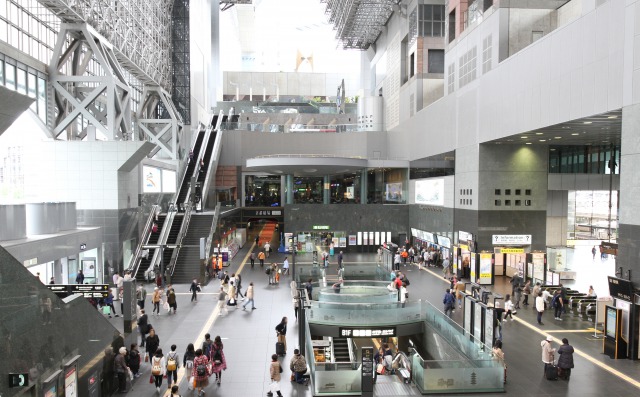
Kyoto Station's central concourse
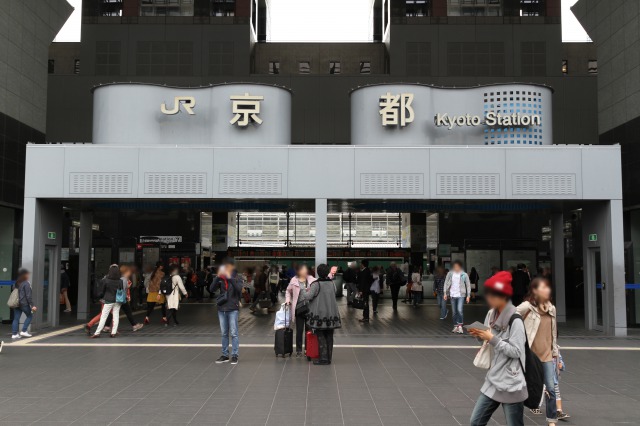
Kyoto Station's central entrance, Karasuma
Kyoto Station is a terminal station directly connected to the shinkansen (bullet train) and Kansai International Airport as well as Kyoto city subway lines, buses, and the Kintetsu Railway.
The station building has a unique architectural design reflecting the near-future that will attract your eye before you even realize it. The eastern side of the building (the front) is the Karasuma exit, and the west is the Hachijo exit. Kyoto Tower and the bus terminal are by Karasuma, and the shinkansen platforms and more are by Hachijo. To go between the two, there's a connecting passage on the 2nd floor of the building, so it's a smooth transition.
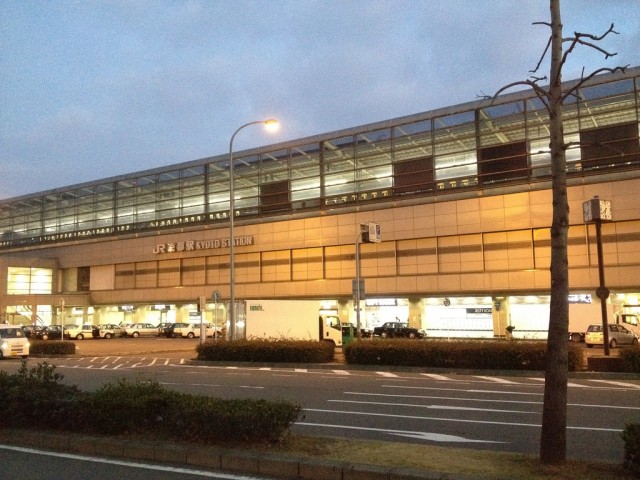
Kyoto Station Building's southern side, the Hachijo exit
2. What transportation is there between Kyoto Station and major sightseeing spots?
Here is information including photographs about reaching major sightseeing spots including routes and platform information so you can smoothly travel between Kyoto Station and your destination.
2-a. How to reach sightseeing spots and how much time is necessary
To travel around Kyoto, it's most convenient to use the city buses, which many routes have Kyoto Station as their origin. There are lots of bus routes so it can get very confusing, but since each route has its number displayed prominently, you should be OK as long as you know the number! Here are some ways to reach popular sightseeing areas from Kyoto Station with bus information. There's also information about whether or not it's reachable by subway and how much time you need via taxi.
|
Destination |
Route |
Closest station/bus stop |
Time necessary |
Time by taxi |
|
Gion |
Bus 100 or 206 |
Gion |
~20 minutes |
~15 minutes |
|
Shijo-Kawaramachi |
Bus 4, 5, 17, 2015 |
Shijo-Kawaramachi |
~15 minutes |
~15 minutes |
|
Kiyomizudera |
Bus 100, 206 |
Gojozaka or Kiyomizudera |
~15 minutes |
~15 minutes |
|
Ginkakuji |
Bus 100 |
Ginkakuji-mae |
~40 minutes |
~30 minutes |
|
Kinkakuji |
Bus 101, 205 |
Kinkakuji-michi |
~45 minutes |
~30 minutes |
|
JR Sagano Line to Emmachi Station, then switch to bus 204 or 205 |
~30 minutes | |||
| Nijo Castle | Bus 9, 50, 101 | Nijojo-mae | ~20 minutes | ~15 minutes |
| Take the Karasuma Line to Karasuma Oike Station and switch to the Tozai Line | Nijojo-mae Station | ~15 minutes | ||
| Fushimi Inari Shrine | JR Nara Line | Inari Station | ~5 minutes | ~15 minutes |
| Arashiyama | JR Sagano Line | Sagano Arashiyama Station | ~15 minutes | ~15 minutes |
For buses and taxis, the time needed depends on the traffic situation. In the peak seasons of spring and fall, traffic jams are quite common, so please be aware.
2-b. Useful information about using buses/trains/taxis/rental cars
Here's some information to know about how to get to bus stops or train platforms as well as things to know as well as discount tickets!
2-b-i. When riding the bus
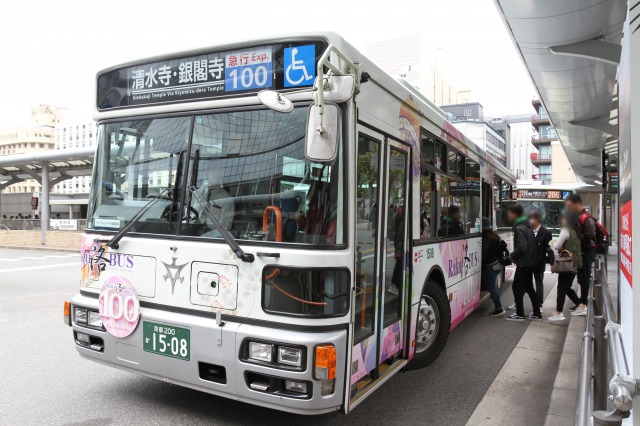
The bus stops are by the Karasuma exit. It's a big bus terminal where lots of different bus routes come in and out, so make sure to check which bus stop number you need on the information chart.
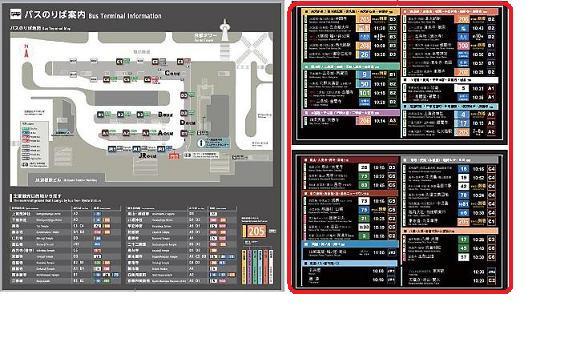
There are various kinds of buses in Kyoto, including city buses, Kyoto buses, West JR buses, and more, but they all generally follow the same pattern. You board from the back entrance and alight from the front, and you pay when you alight. You can pay in cash via the box next to the driver or by using an IC card. If you use the City Bus/Kyoto Bus One-Day Card, you can use city and Kyoto buses all day long for the price of the card.
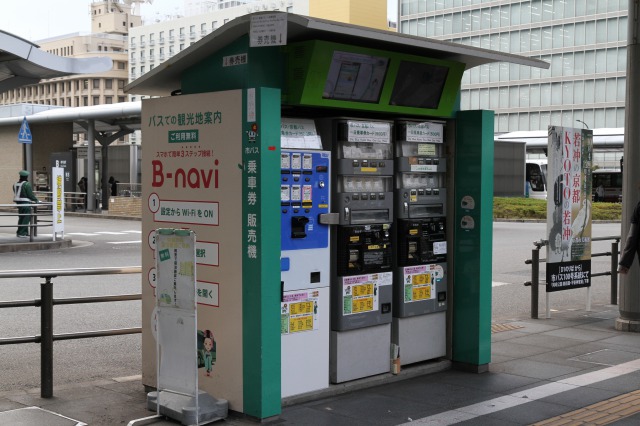
Machine where you can buy the one-day pass at the bus terminal
In the bus ticket center bu the bus terminal, there are boards full of information regarding the bus and subway systems. There is information in English, Chinese, and Korean about the bus routes as well as useful information, so please stop by.
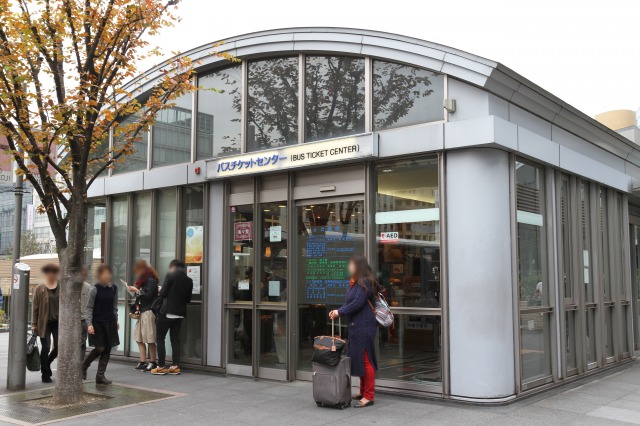
Entrance to the bus ticket center
2-b-ii. When riding the JR train lines

Since the station building was built around the JR lines, when you enter using the Karasuma exit, the JR lines' central ticket gate is very obvious. The Karasuma and Hachijo exits are connected by a bridge, so it's very easy to access the rest of the station like the Hachijo side or the subway lines. There's also a shinkansen ticket gate on the Hachijo side as well, so please be careful not to confuse them.
Platforms 30-34 are for trains coming and going between Kansai International Airport and the Sagano Line connecting to Arashiyama, and they're a little ways away from the rest of the train lines. They are relatively far away from the ticket gates, so please go with plenty of time.

When using the JR lines, it would be convenient to buy the IC card called ICOCA. It's a transportation card sold by JR Nishi Nihon (West Japan Railway). All you have to do is touch the card to the reader and it will automatically pay your fare using the money charged to it, so if you have it you no longer need tickets. There's also the Kansai One Pass, an IC card aimed towards foreign tourists to the Kansai area. You can use it as a IC card for transit but also many facilities and shops also accept it.
2-b-iii. When riding the subway

There are two subway lines in Kyoto, the Karasuma Line and the Tozai Line. The one that can be ridden from Kyoto Station is the Karasuma Line, which travels from east-west through Kyoto.
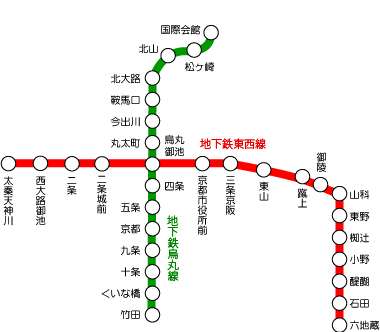
The ticket gates are on the B2 floor of the station building. Take the escalator in the center of the central concourse downstairs and then take a U-turn at the information board. At the end of a long hallway filled with shops is a small set of stairs. Once you go up those stairs, the ticket gate will be to your left. The ticket gates to the right are for the JR lines, so please double-check before you enter.
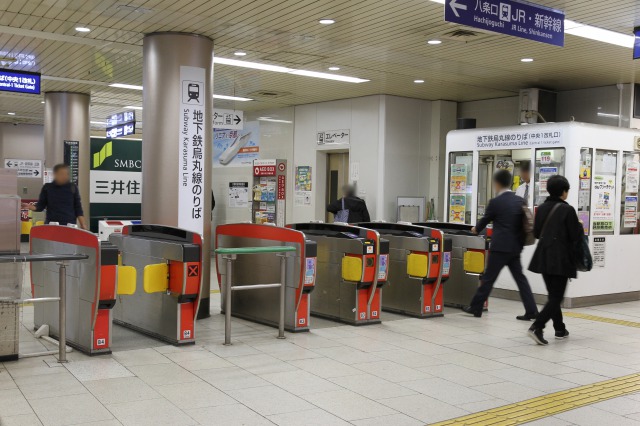
There are discount tickets like the City Subway 1-Day Free Ticket and the Kyoto Sightseeing One/Two-Day Pass that can also be used on the bus system, so please consider using those.
2-b-iv. When riding the Kintetsu Railway

Compared to the bus and subway system you might not use it as frequently, but the Kintetsu Railway has trains headed towards Nara and Mie's Ise and Kashiko Islands.
The ticket gates are on the Hachijo side. The shinkansen central exit is right in front. When coming from Karasuma, take the north-south passageway. Take the stairs that will appear in front of you, exit the shinkansen central exit, and take a right.
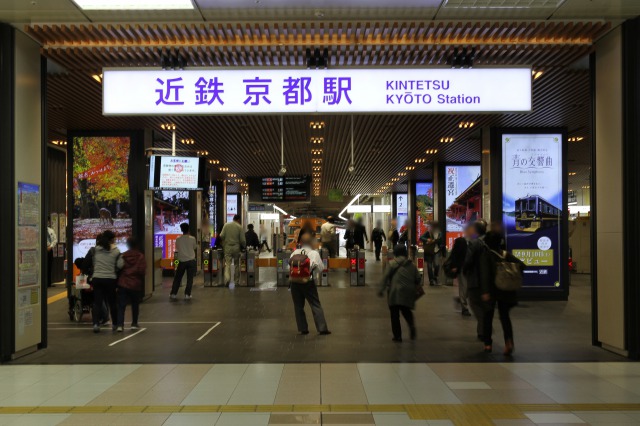
2-b-v. When riding a taxi

In Kyoto, there are "foreigner friendly taxis." It's a service that was started in March 2016, and the fare is the same as a regular taxi. The drivers have some knowledge of foreign language and studied hospitality, so they will help navigate you to your destination. The way to tell the difference between them and regular taxis is that they have an official sticker on both sides of the car as well as a special light. There are specific taxi stands at both the Karasuma and Hachijo exits. More detailed information about their location can be found later in this article.
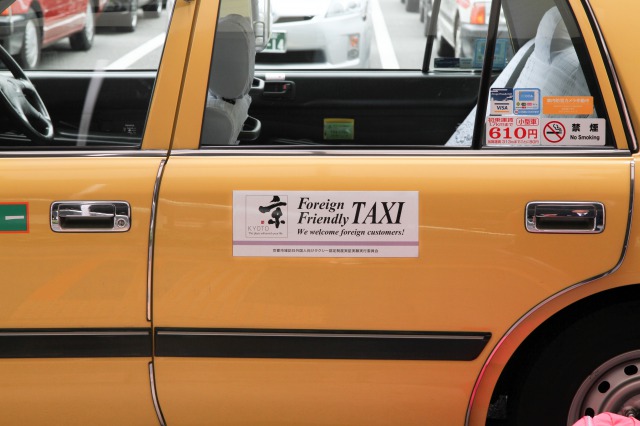
2-b-vi. When renting a car
There are plenty of rental car places around Kyoto Station. Here are two that are very easy to access. Nissan Rent a Car Kyoto Ekimae Branch is close to the Karasuma exit. You'll be able to see the Kyoto Chuo post office to your left when you exit from the central exit of the station. Head towards the post office, and the rental car shop will be on the 1st floor of the building on the right.
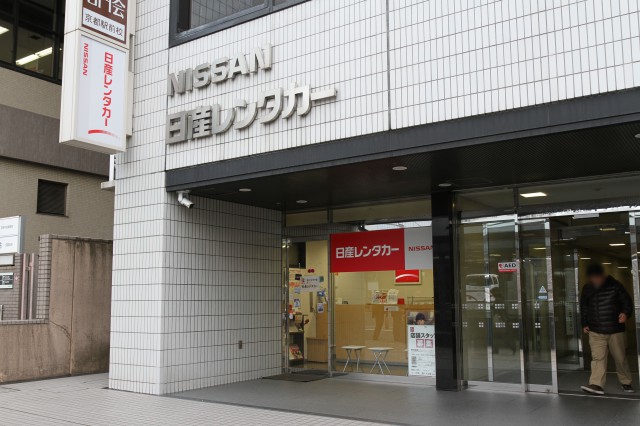
From the Hachijo exit, the 24-hour Nippon Rent-A-Car Kyoto Ekimae Branch is very convenient. You can exit using the door next to the McDonald's by the Hachijo east exit and go straight, crossing the large street. Next, take a right at the crosswalk and keep going. You'll be able to see the red and white sign to your left after a little while.
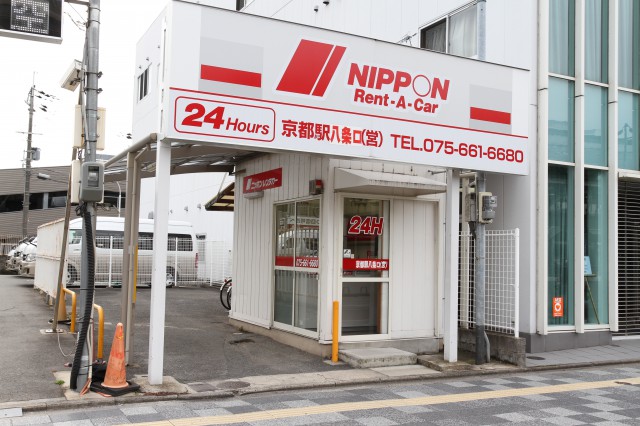
2-c. Things to know about switching between the JR lines and the other lines
The area inside the ticket gates of the JR lines is built simply so you most likely wont get lost, but depending on which ticket gate you're headed, it may be a little far and you might get anxious on your way. The Kansai International Airport Line and Sagano Lines on platforms 30-34 are placed in a slightly different place, so it might be hard to find. Here is some information so you can travel within the station smoothly.
2-c-i. How to reach the ticket gate from the JR platform
If you go through the wrong ticket gate when you're switching train lines, you might run into some trouble. This chart lists which ticket gate to use for various destinations within the station.
|
Destination |
Ticket Gate |
|
Bus terminal |
Central gate |
|
Subway platforms |
Underground east exit |
|
Kintetsu Railway platforms |
West gate |
|
Taxi stand |
Central gate/west gate/Hachijo east gate |
|
Shinkansen platform |
Accessible from within the JR line ticket gate |
Use the following photos to figure out the routes between platforms and ticket gates.
JR Kyoto Station map


JRおでかけネット
[From Platforms 0-10 to the west/central exits]
(1)From each platform, take the stairs up to the west overpass. (In the case of plaform 0, the central exit is right in front. You can use the overpass to get to the west exit)
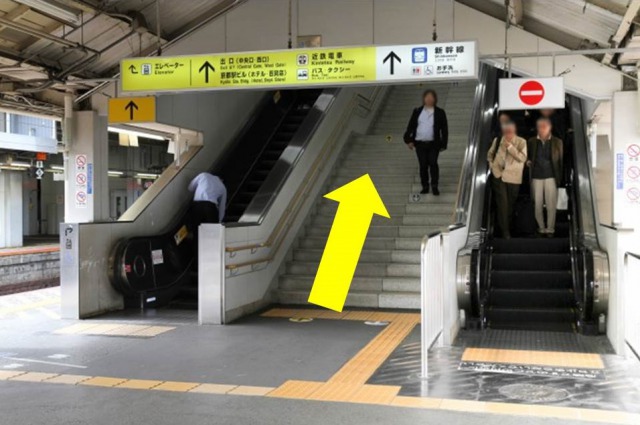
(2)The west exit is in the center of the west overpass.
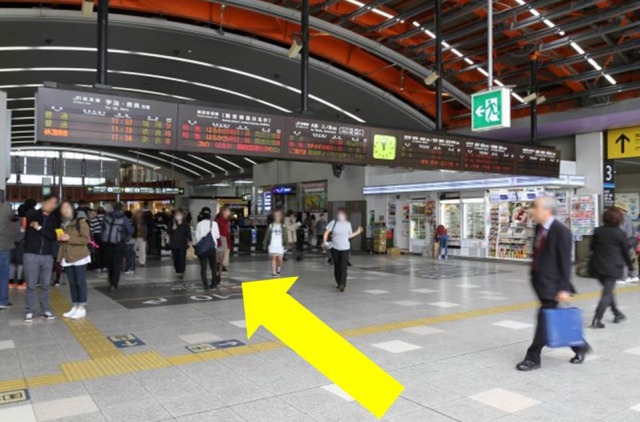
(3)To take the central exit, use the west overpass and take a right
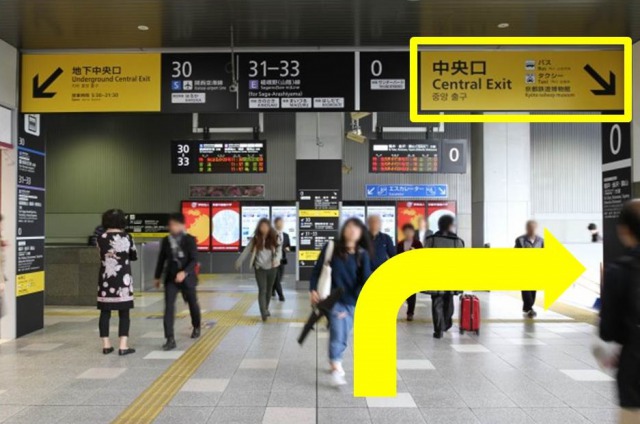
(4)When you take the stairs to the right, to the left ahead of you will be the central exit.
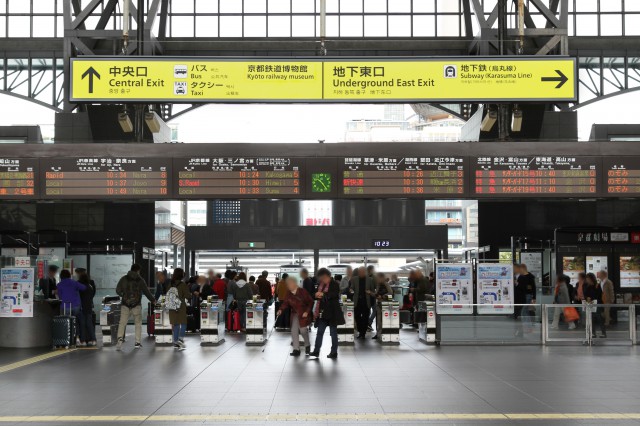
[From platforms 0-10 to the underground east/Hachijo-east exits]
(1)Take the stairs down from each platform.
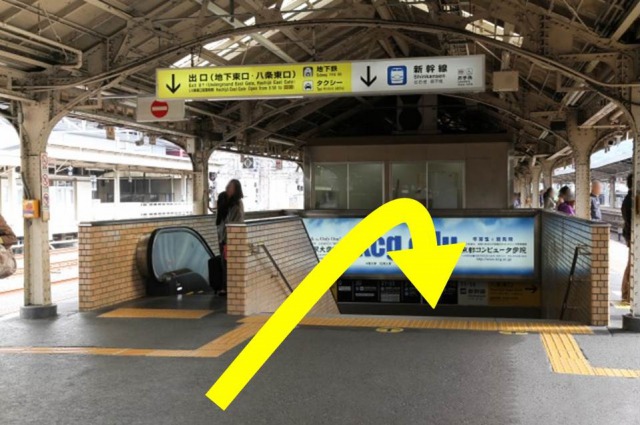
(2)Pass the information panel (heading towards platform 0) and you'll eventually see the underground east exit.
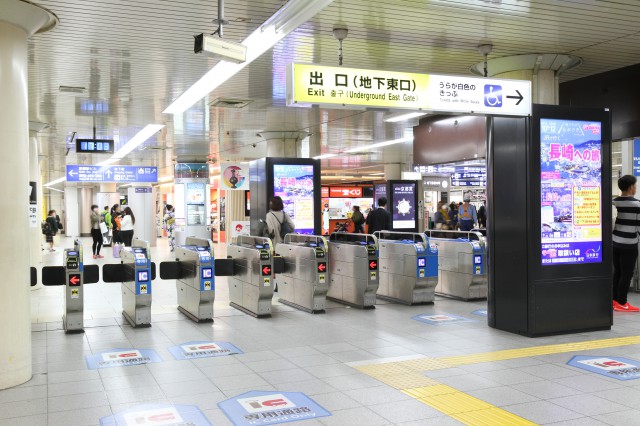
(3)To go to the Hachijo east exit, go in the other direction (towards platform 10) all the way to the end of the hall.
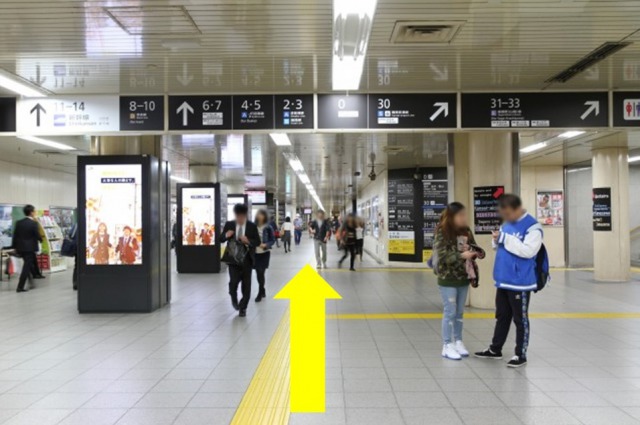
(4)Take the stairs to your left and the Hachijo east exit will be there. (If you take the escalator to the right, you will hit the shinkansen ticket gates, so please pay attention.)
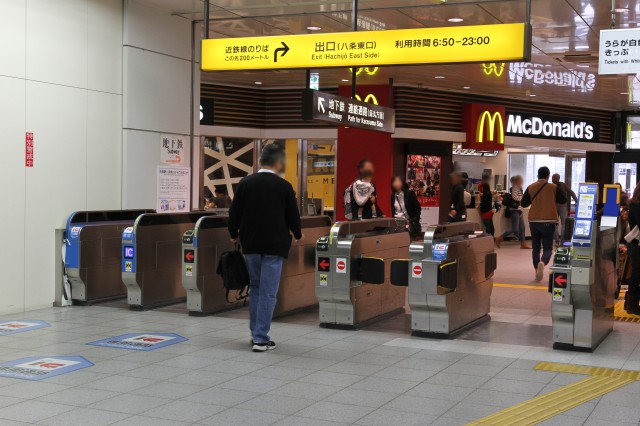
[From platforms 30-34 to the central/west exits]
(1)Head towards platform 0
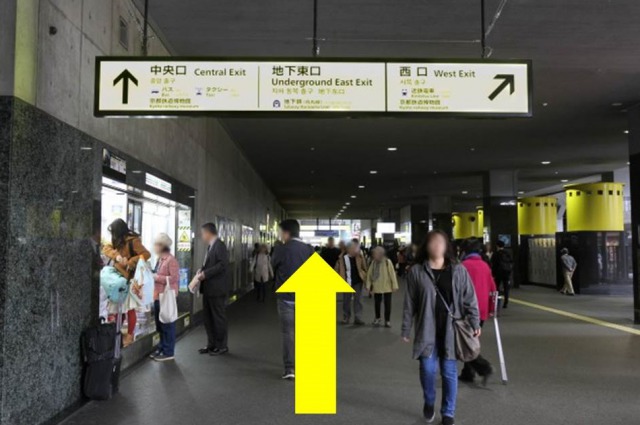
(2)Take the escalator on the right heading to the west overpass.
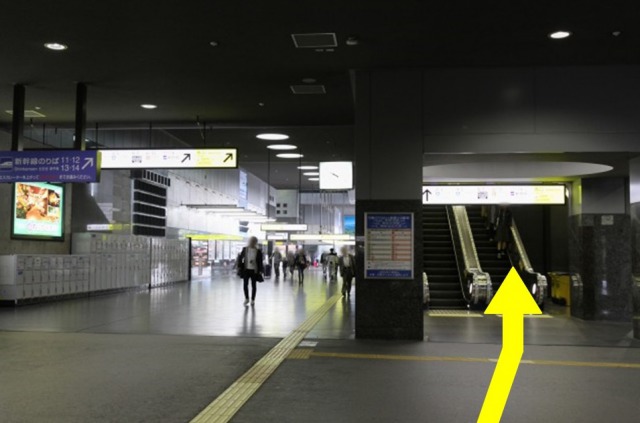
(3)From the west overpass, head right and the west exit will appear to your right.
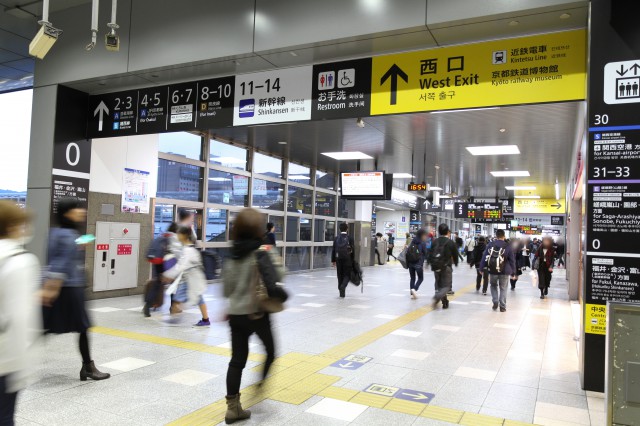
(4) If you want to take the central exit, keep going straight. Do not take the escalator. You'll see a ticket gate to the left.
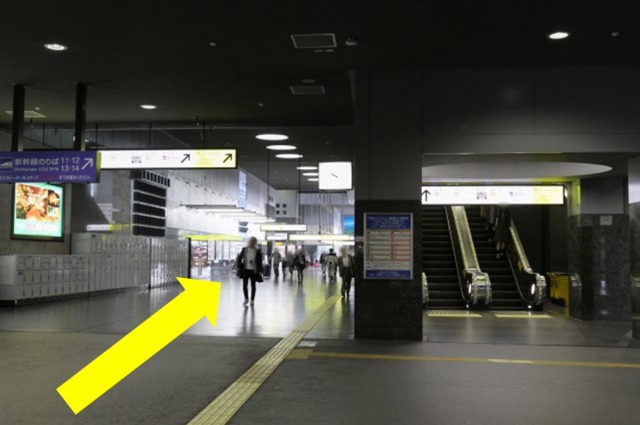
[From platforms 30-34 to the underground east/Hachijo east exits]
(1)Go towards the central exit and keep going straight.
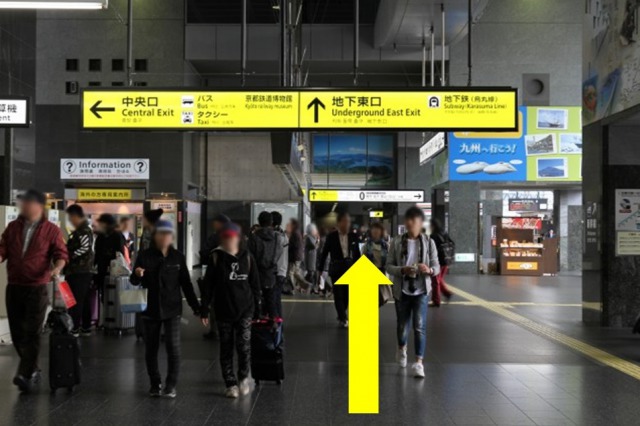
(2)Keep going straight and you'll reach a set of stairs. Go down them.
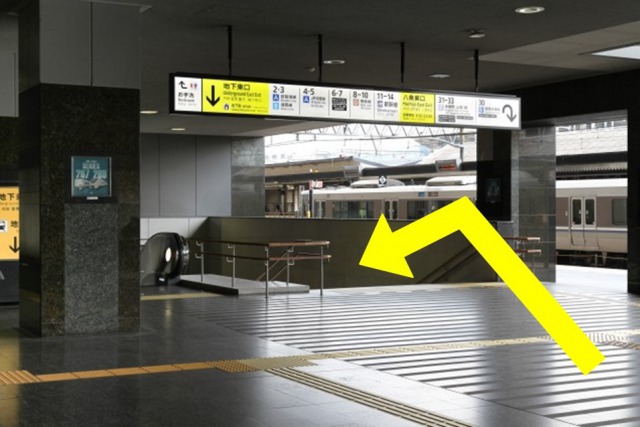
(3)The underground east exit is right by the end of the stairs.

(4)To reach the Hachijo east exit, take the stairs and head right, then continue straight until the end of the hall.

After this, it's the same as if you were coming from platforms 0-10.
[Reaching the shinkansen platforms]
To reach the shinknsen from the JR lines, you can switch trains without exiting the JR ticket gate. Go to the west overpass, head towards platform 10, and take the stairs down. The central gate for the shinkansen will be right there. You can head directly to the platforms.
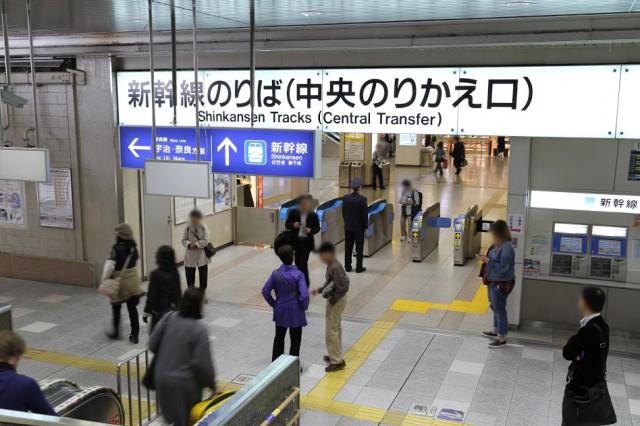
[Other exits]
There are 2 other exits within Kyoto Station. One of them is the Nishinotoin exit behind platforms 30 and 31 that's connected to the appliance store, Bic Camera. Another one is the underground central exit. It's by the bottom of the escalator near the central exit on the 1st floor. Both of these exits aren't as frequently used, so you may not need to know them.
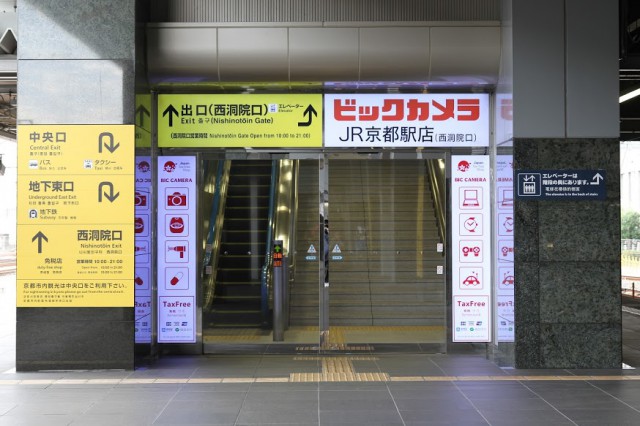
Nishinotoin exit
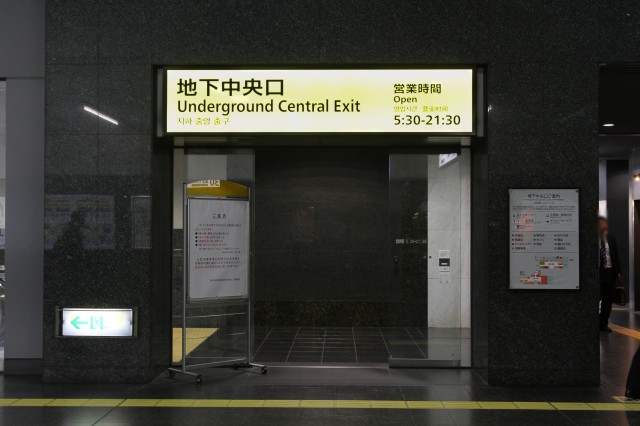
Underground central exit
2-c-ii. From the ticket gate to the bus/subway/Kintetsu Railway/taxi stand
If you manage to reach the ticket gates, you should be able to reach them. If you follow the information map you won't get lost, but here are photos for reference.
[Reach the bus terminal from the central ticket gates ]
(1)If you exit the central exit and go straight, the bus terminal will be straight ahead.
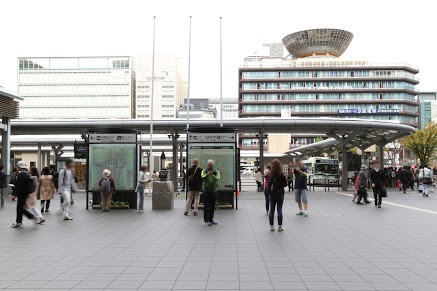
(3)The bus stops are indicated by flags, so please find the bus stop you need and wait in line.
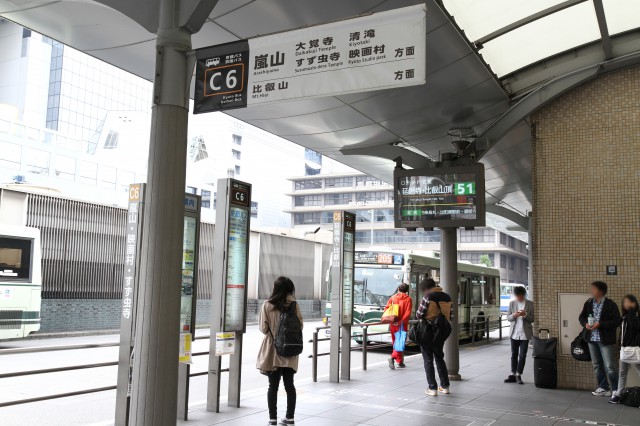
[Reach the subway platforms from the underground east exit]
(1) From the underground east exit, head towards the lottery booth (red sign) and keep going.
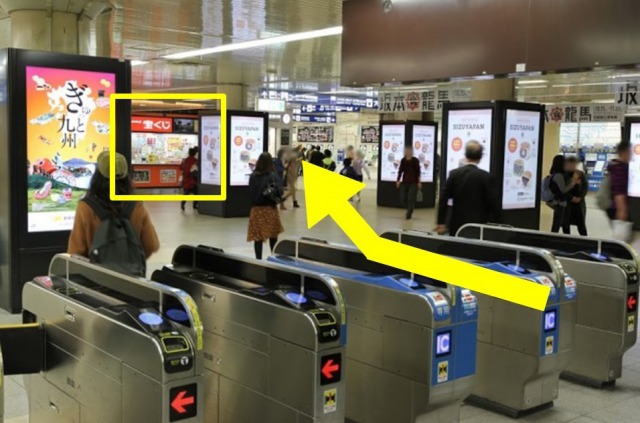
(2)Continue past the bus/subway information center.
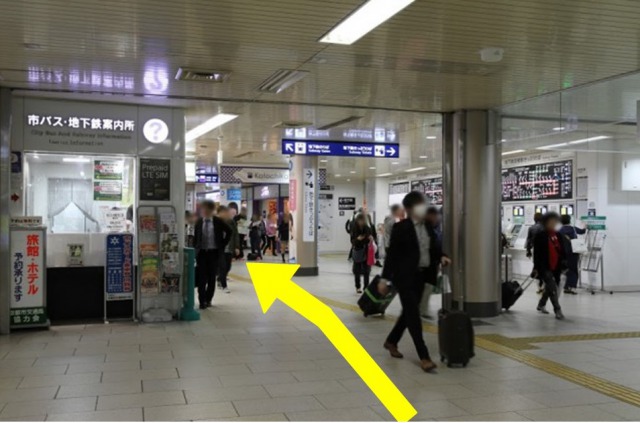
(3)You'll be able to see the subway to the left.
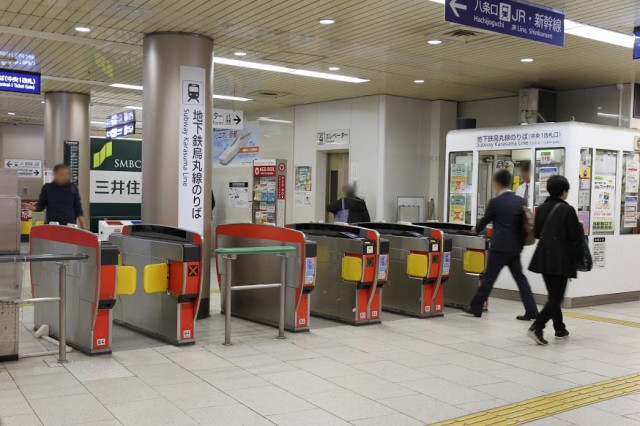
[Reach the Kintetsu Railway platforms from the west exit]
(1)Exit the west exit and head left.
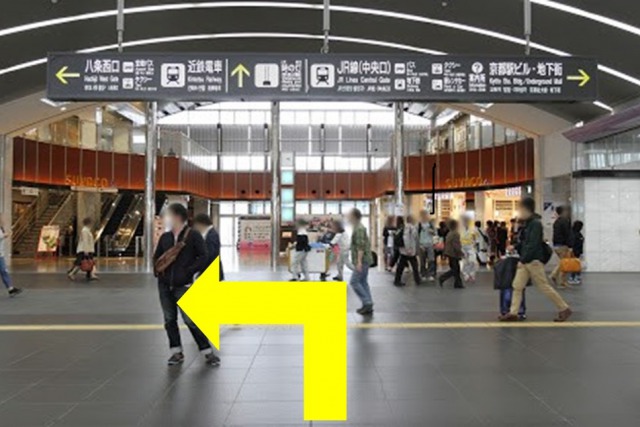
(2)Go down the stairs.
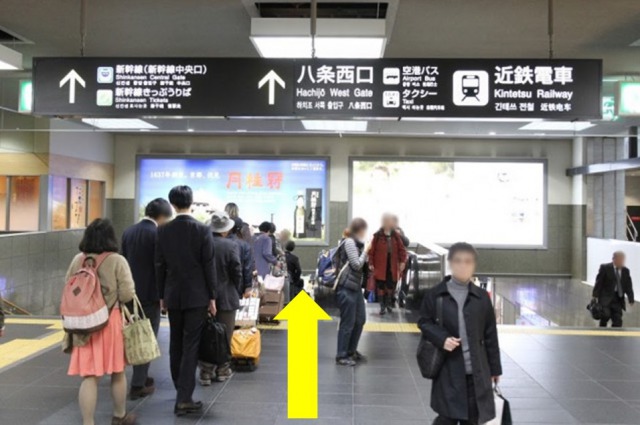
(3)At the end of the staircase, you'll be able to see an information sign.
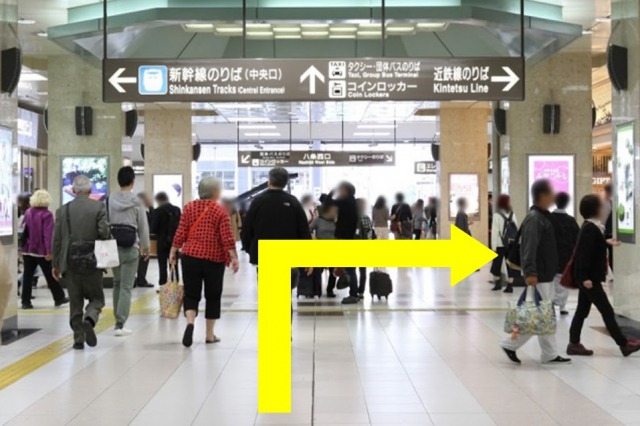
(4)At the sign, take a right, and you'll see the entrance to the Kintetsu Railway.
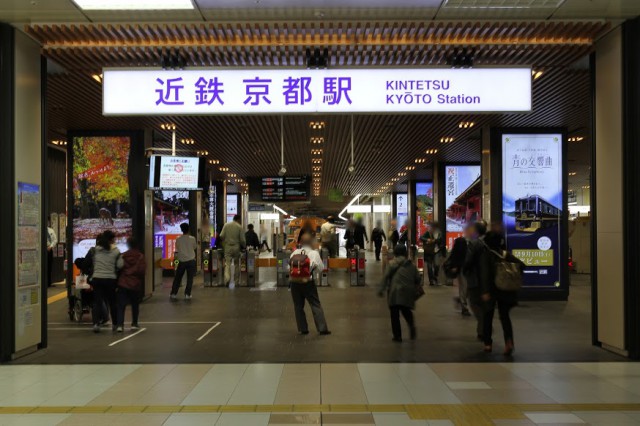
[Reach the taxi stand from the central/west exit]
◎For the Karasuma taxi stand
(1)Exit the central exit. Go outside and head right.
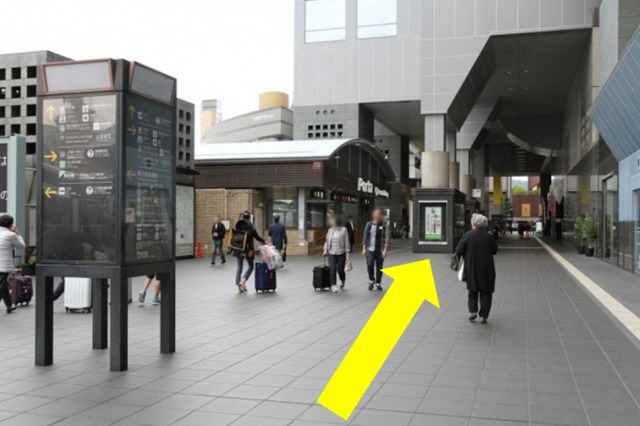
(2)Continue until you see an information sign.
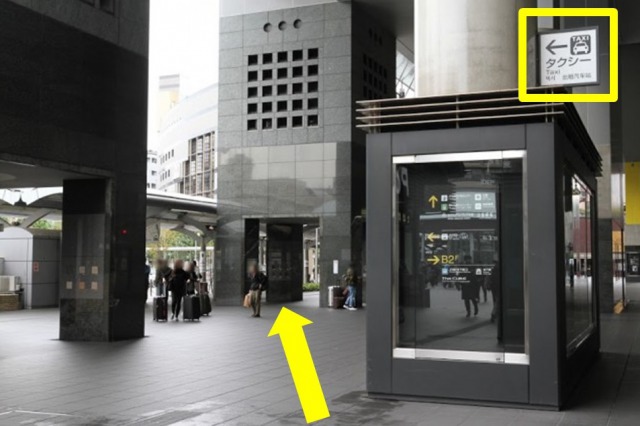
(3)Follow the arrow and you'll reach the taxi stand.
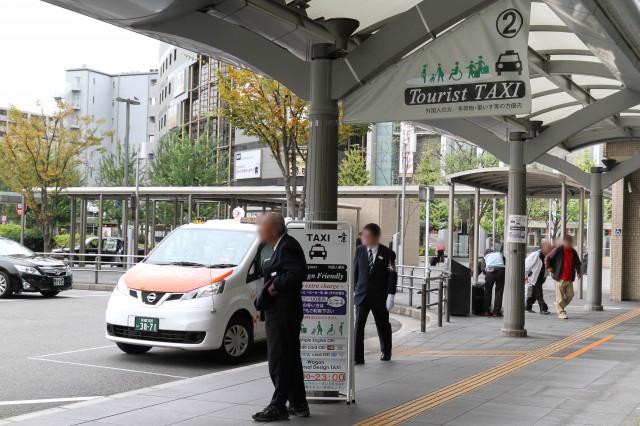
※The foreign friendly taxi stand is behind the regular taxi stand.
◎For the Hachijo taxi stand
(1)Head towards the Kintetsu Railway from the west exit
(2)Follow the information sign and go straight
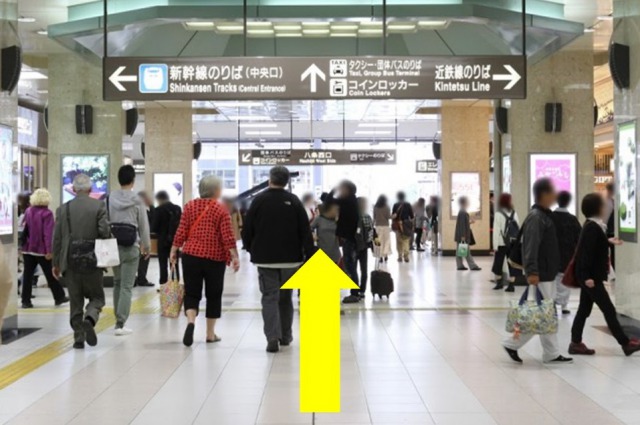
(3)Theere will be stairs to both your right and left, but take the ones to the right.
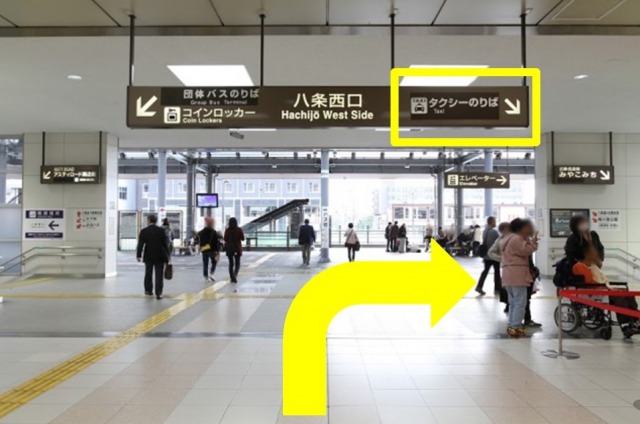
(4)Follow the red arrows.
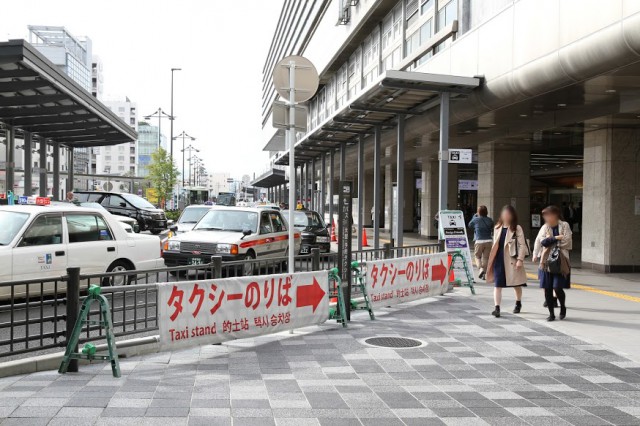
(5)The foreign friendly taxi stand is behind the regular taxi stand.
3. Master Kyoto Station! Convenient spots within the building
3-a. Places you can leave luggage
There are luggage lockers inside the ticket gates. The spot with the largest number is the JR Kyoto Station Hachijo Exit Central Locker area with about 1,360 lockers from small to large. There are also plenty around the sightseeing information center.
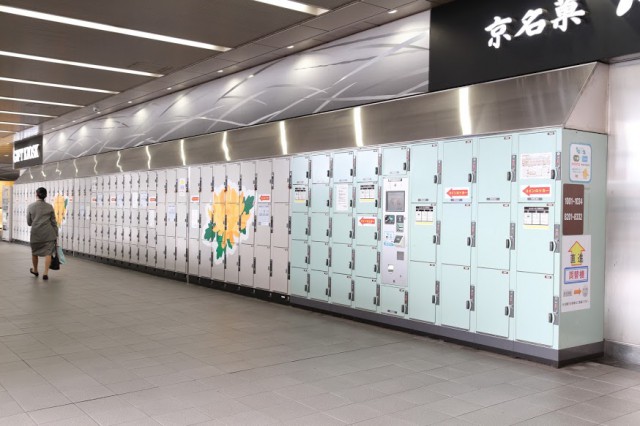
If you simply cannot find any open lockers, head to the B1 floor via the escalator in front of the central exit. The JR Kyoto Station Carry Service will be right by the underground central exit. They can hold your luggage for a maximum of 15 days.
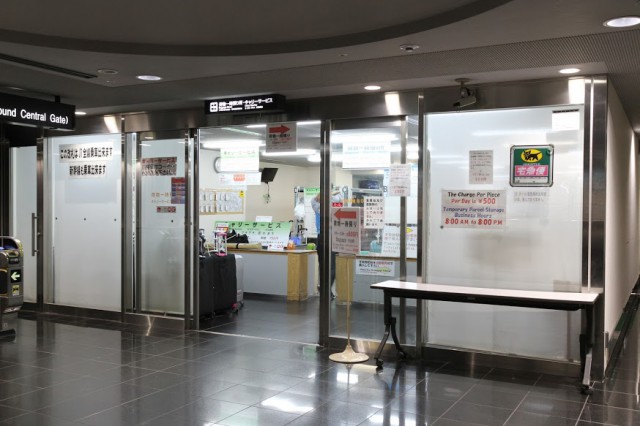
You can also drop your luggage off for a time at the JR Kyoto Station Shinkansen Hachijo Exit Delivery Service. They will deliver your luggage from Kyoto Station to your hotel within the Kyoto city limits (you can also have your luggage delivered from your hotel to the station.) It's right by Hachijo east exit, to the left of the door next to McDonald's.
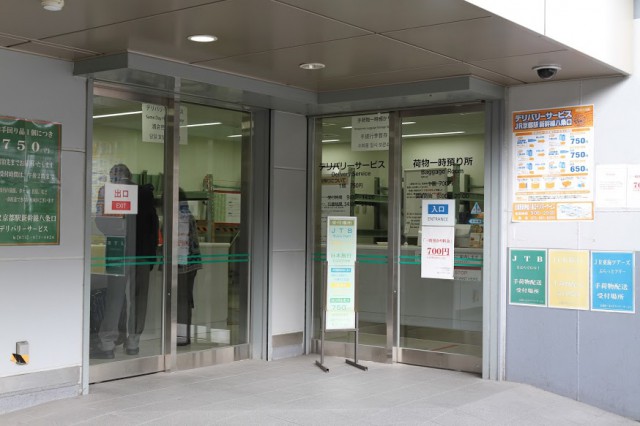
3-b. Places for currency exchange
・Travelex
There are two currency exchange places that are easily accessible from the ticket gate. One is to the right diagonally from the central exit, and the other is to the left directly from the west exit. They're inside Nihon Ryoko TiS Kyoto and Nihon Ryoko TiS Kyoto Nishiguchi.
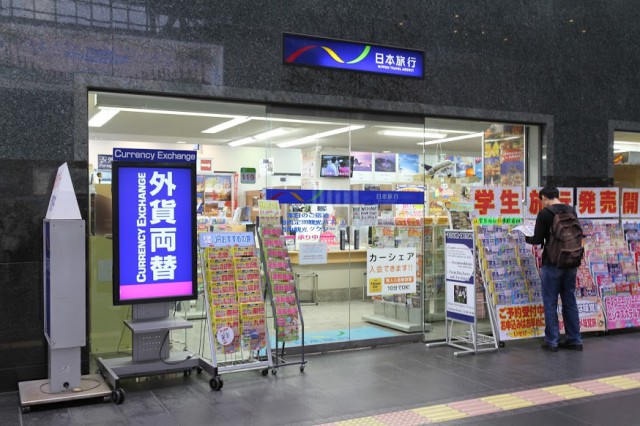
・Ticket shop
Exchanging currency at ticket shops is a good idea because often their rates are better than Travelex or banks. Not every ticket shops does currency exchange, but all of the Ticket Shop Tokai branches within Kyoto do. There are four branches around Kyoto Station. The closest one is on the northeast corner of the crosswalk between Kyoto Station and Kyoto Tower. It's on the 2nd floor of the Torii building.
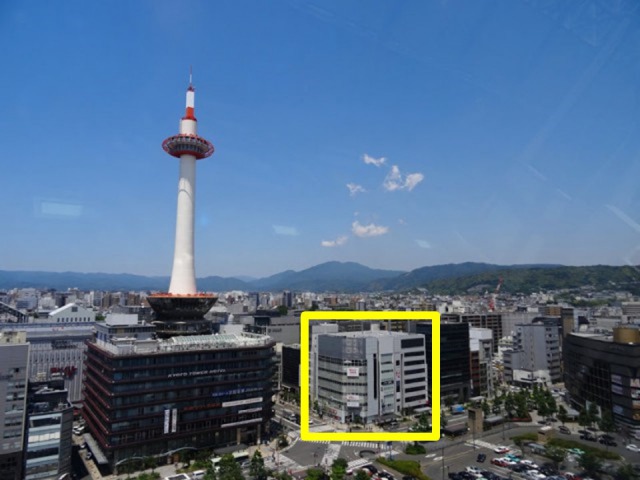
・Seven Bank/Currency exchange machines
Seven Bank ATMS don't offer currency exchange, but you can withdraw Japanese yen from your foreign debit cards using them. You can find them in various places, including the Seven Eleven by the underground east exit and in the Kansai Tourist Information Center Kyoto inside Kyoto Tower. Please double-check that your cards are valid via the official site. In the Kansai Tourist Information Center Kyoto, there is also a currency exchange machine.
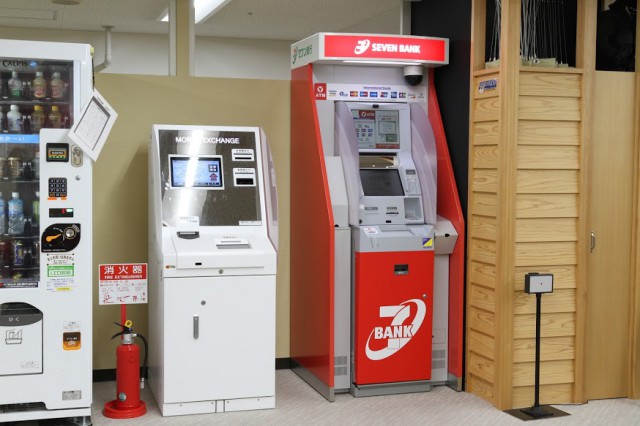
3-c. Midori no Madoguchi, where you can buy/exchange JR tickets
You can buy tickets for the shinkansen, special express, and express trains at the Midori no Madoguchi. This is also where you hand over your exchange order and receive your JR Rail Pass. There's one by the central exit on the east side of the central concourse.
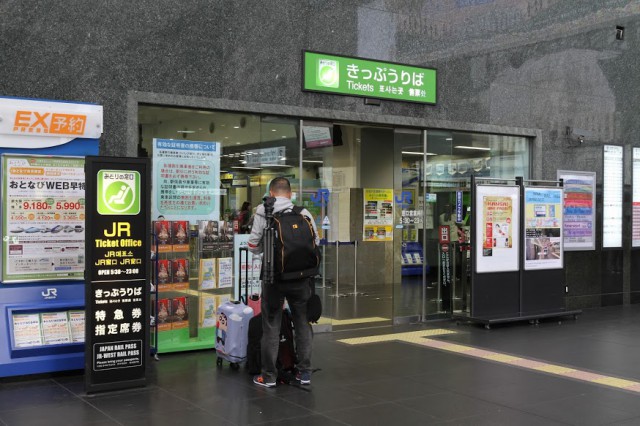
3-d. Kyoto Station is full of convenient spots and services!
・Kyoto Tourist Information Center (Kyonavi)
The Kyoto Tourist Information Center is on the 2nd floor of Kyoto Station by the JR Kyoto Isetan. You can get tourism information and help in Japanese, English, Chinese, and Korean. They also have information pamphlets in various languages, sell tickets for various tourism-related things, and will help make lodging reservations for you.
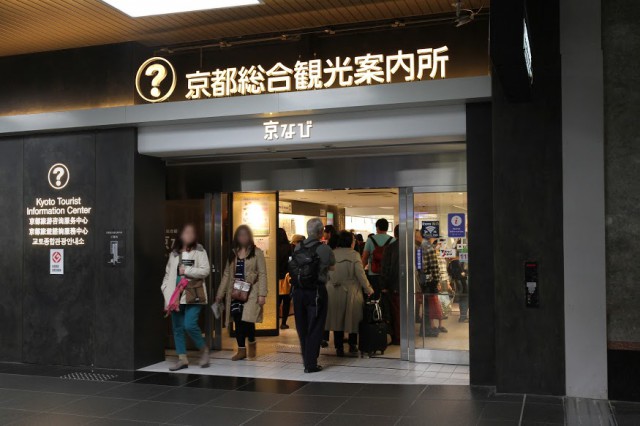
・Wi-Fi spots
The Wi-Fi services available in Kyoto Station are JR WEST FREE Wi-Fi and KYOTO Wi-Fi. There are stickers showing where you can use them, such as the large stairs on the west side of the central concourse or in front of the information center on the 2nd floor. Please be aware that to use the Wi-Fi you need to register via e-mail for JR WEST FREE Wi-Fi or by e-mail or social media account for KYOTO Wi-Fi.
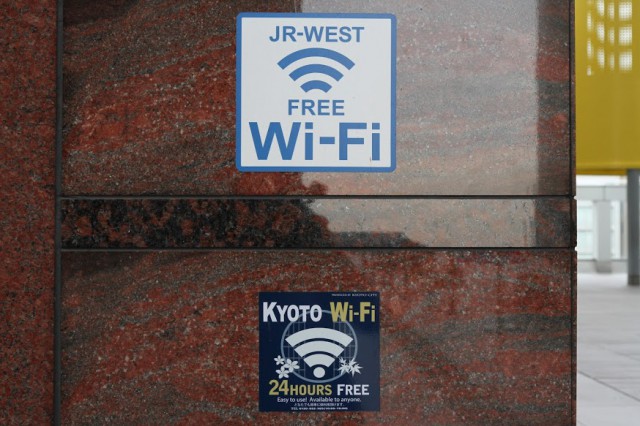
Places where you can use JR WEST FREE Wi-Fi or KYOTO Wi-Fi
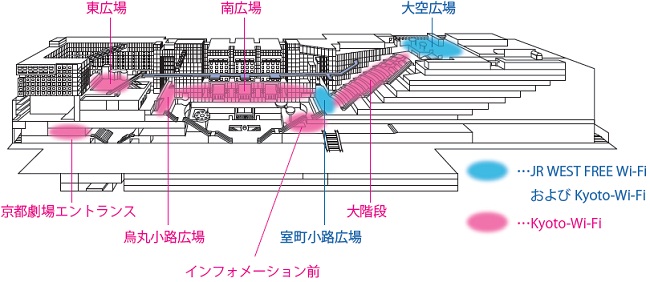
・Kansai Tourist Information Center Kyoto (inside Kyoto Tower)
It's not inside the building, but the Kyoto Tourist Information Center on the 3rd floor of Kyoto Tower at the Karasuma exit is very convenient and has lots of sightseeing information. It's an information center aimed towards foreigners, so there are various facilities and services available, including tourism information, luggage delivery services, and ticket sales. On the same floor is a shop where you can rent kimono or yukata, so why not stop by both of them?
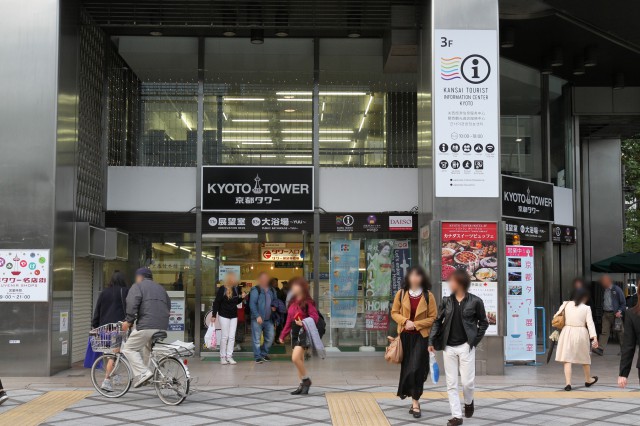
▼Major facilities and services
・English, Chinese, and Korean speaking staff
・Information counter
・Luggage service (baggage check, same-day delivery to the hotel, express delivery both domestically and internationally)
・Currency exchange machine (USD・AUD・GBP・EUR・TWD・HKD・RM・THD・KRW・CNY・CAD・SGD)
・Seven Bank ATM
・One-day tour bookings
・Tickets (transportation, admission, etc) sales
・Free Wi-Fi
・Free Internet
・Tourism pamphlets
・Prayer rooms separated by gender
4. Enjoy the time between sightseeing! Recommended spots in and around Kyoto Station
Inside Kyoto Station there are plenty of facilities including shopping centers like JR Kyoto Isetan, Kyoto Station Building Shopping Arcade The CUBE, Ekimae Chikagai Porta, and more, as well as a hotel, theater, and art gallery! The top part of the atrium of the central concourse has a sky walk from where you can see Kyoto Tower and the cityscape in one sweep. There are lots of recommended spots around the station as well, so here are some places to consider checking out.
4-a. From fashion to souvenirs! Try here for shopping
Kyoto Yodobashi is an appliance and electronic store that has almost everything you can think of. There are also various other shops inside the building, including shops like mass marketers like Uniqlo and Nitori, fashion, miscellaneous goods, and cosmetics stores, bookstores, restaurants, and more. To access it from Kyoto Station, head to Kyoto Tower from the Karasuma exit. It's one block north of the tower.
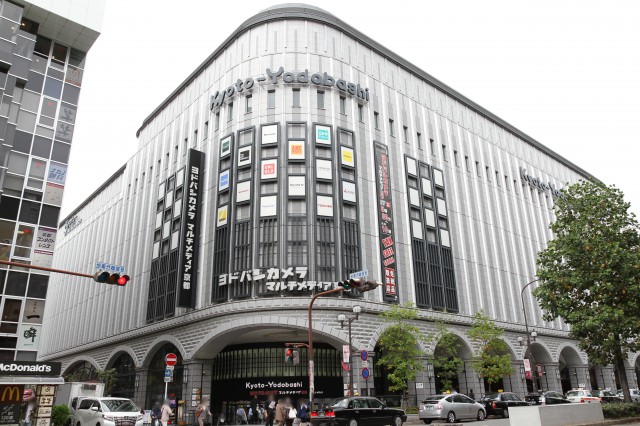
Near the New Miyako Hotel by the Hachijo Exit is Aeon Mall KYOTO. It's a large complex facility that includes shops like Uniqlo, Muji, Daiso (100 yen shop), bookstores, a movie theater, and more. On the 2nd floor there's a Ticket Shop Tokai where you can exchange currency. It's also full of restaurants, cafes, and other places to buy food.
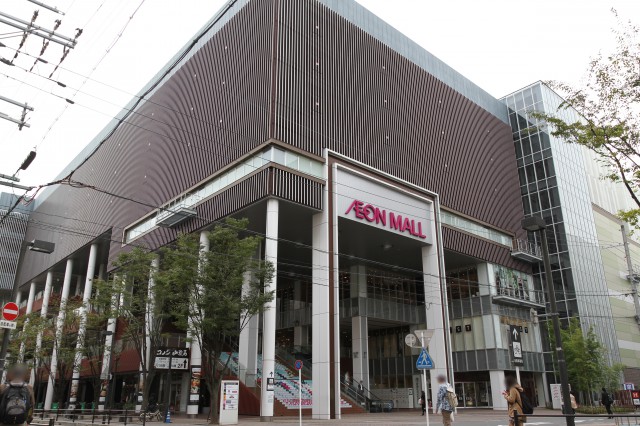
You can also quickly buy souvenirs within the station building. For example, in the east area of the Kyoto Station Ekimae Chikagai Porta, there's a souvenir shop space full of items from traditional confectionery to miscellaneous goods right next to the subway ticket gates. There's also a shop full of famous Kyoto sweets right next to the central exit on the west side of the central concourse that's perfect for choosing souvenirs.
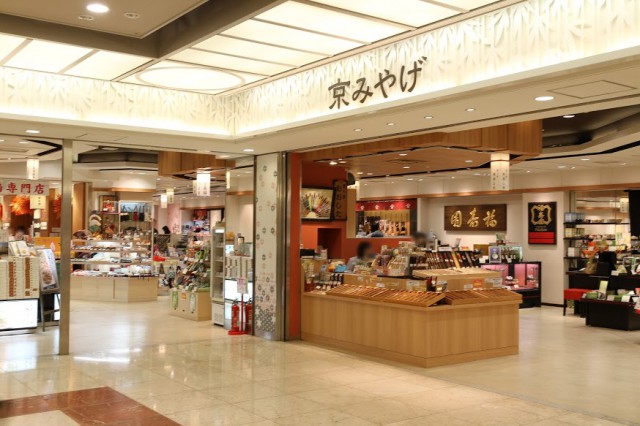
4-b. Near the station! You can see the nightscape! Recommended restaurants
These restaurants are easy to stop by before or after sightseeing. First there's the Kyoto Omotenashi Komichi by the Hachijo exit. They have everything from Japanese restaurants produced by well-established pickle shops and conveyor belt sushi to coffee shops and fast food branches. It's close to the shinkansen gates so it's great for before or after you ride the train.
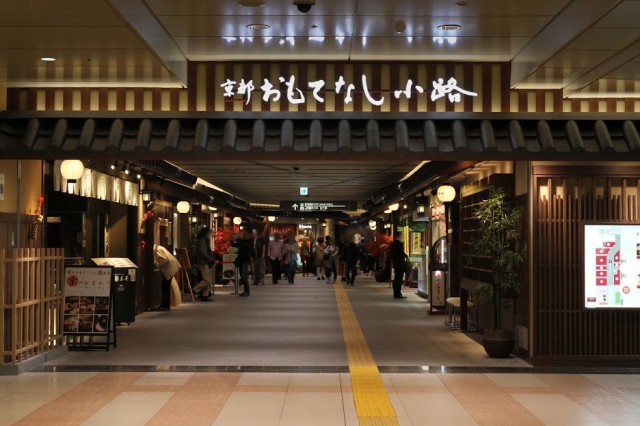
The 7-10th floors of JR Kyoto Isetan on the west side of the central concourse includes a floor with open view restaurants for beautiful scenery. You can gaze upon the Kyoto cityscape and Kyoto Tower as you enjoy your meal. You can enjoy the night view during dinner as well, so please stop by.
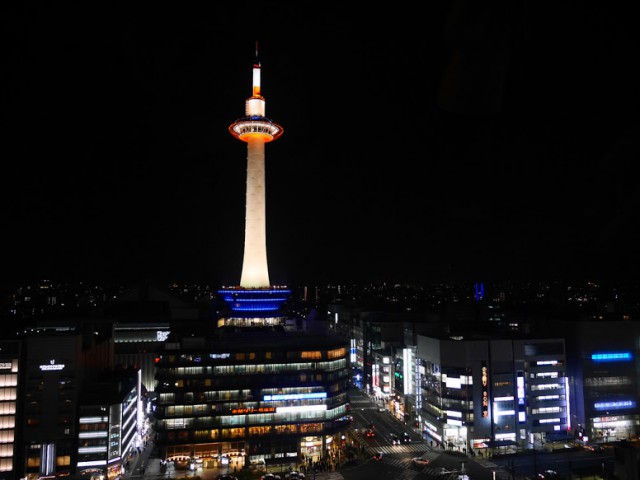
PROAram Kudurshian/Flickr
South of the big stairs on the 10th floor of the Kyoto Station Building is the ramen theme park Kyoto Ramen Koji. There are ramen shops from all around the country gathered here in this Japanese-style space that includes a rock garden and latticed ceilings. If you're wondering about the flavors of each restaurant, please check out the official website.
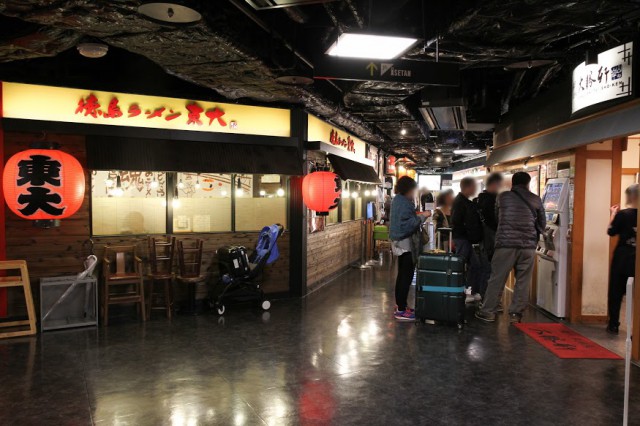
5. Select your lodging area based on your goals and travel plans!
Kyoto is an international tourism city that's always full of travelers from all over the world. It's also a popular destination for domestic travelers, so on weekends and holidays the lodging facilities often fill up quite early! When you decide to travel to Kyoto, it's best to make reservations as soon as you can. If you're wondering what areas would be best, please consider the following options.
5-a. The area around Kyoto Station
If you're planning on going to a different city the next day, it's best to stay around Kyoto Station. JR lines connecting Kyoto to nearby cities, the shinkansen, and long-distance buses all use Kyoto Station, so you can leave without rush even in the early morning. There's the Hotel Gran Via Kyoto within the station itself, but there are a few facilities near the station as well. The Kyoto Tower Hotel by the Karasuma exit is very easily accessible since Kyoto Tower is a landmark. There's also the New Miyako Hotel by the Hachijo exit. If you're looking for a guesthouse, Tarocafe is just a 3 minute walk from the Karasuma exit.
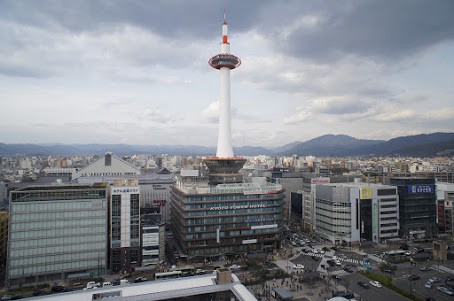
yasuo ogiuchi/Flickr
5-b. Enjoy yourself until nighttime! The center of the city
For people that want to enjoy Kyoto at night, it's best to stay in the center of the city where the business district is (the area within Gion-Shijo to Sanjo Stations, Karasuma - Kawaramachi Stations, Shijo - Karasuma Oike Stations). It's a walkable distance in the Gion and Pontocho area which has a wonderful atmosphere. You can find all sorts of lodging here, from the top-class well-established traditional Japanese inn, Tawaraya Ryokan, to reasonable business hotels, guesthouses, and capsule hotels.
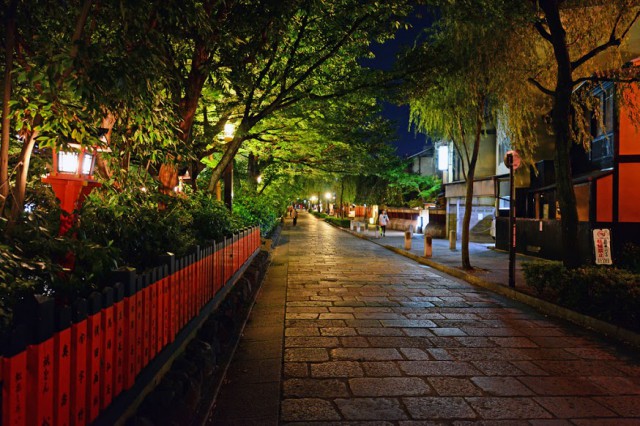
Hansel and Regrettal/Flickr
5-c. Stay in a machiya, a traditional merchant's house full of atmosphere
If you want to stay in a place with a Kyoto-like atmosphere, why not try a machiya? Kingyoya is a guesthouse in a renovated machiya in Nishijin, an area near major sightseeing areas like Kinkakuji, Ryuanji, and Kitano Tenmangu. There's also a sento (public bathhouse) near by, so you can have a true Kyoto experience if you stay here. There are other similar facilities throughout the city. There are even machiya where you can rent the whole building if you'd like, so please look around.
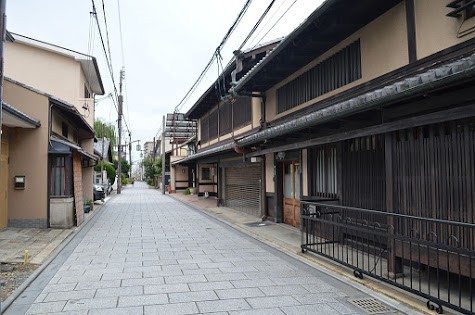
At by At/Wikimedia
Thumbnail:Steve Barze / Shutterstock.com
The information in this article is accurate at the time of publication.



